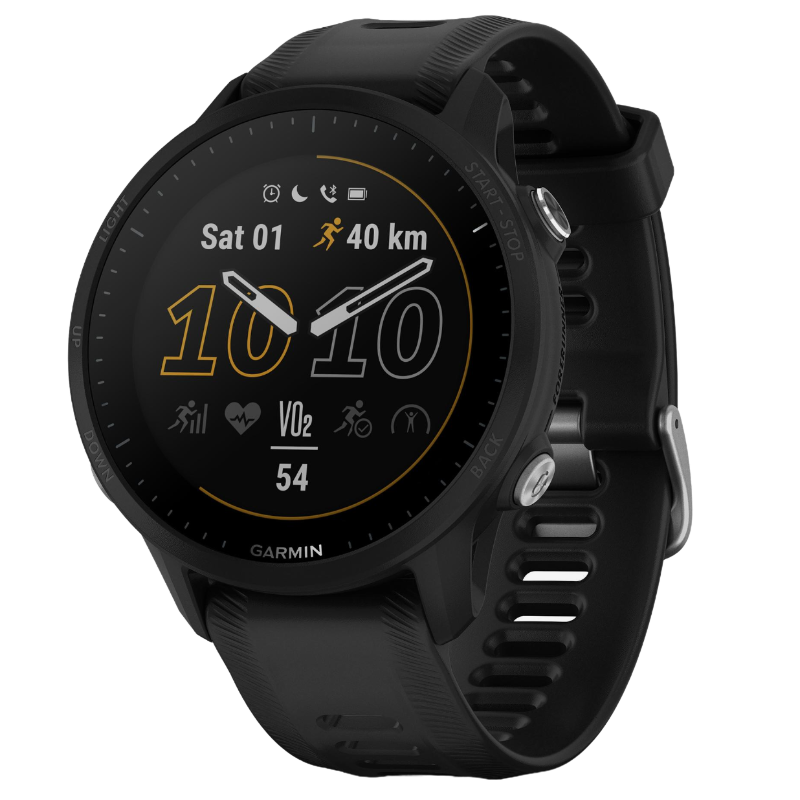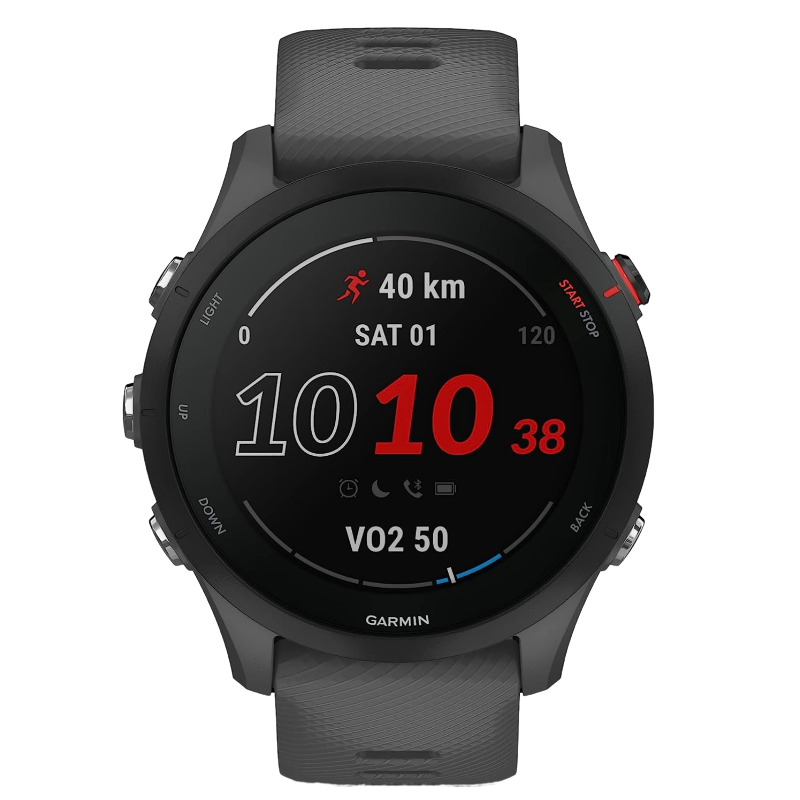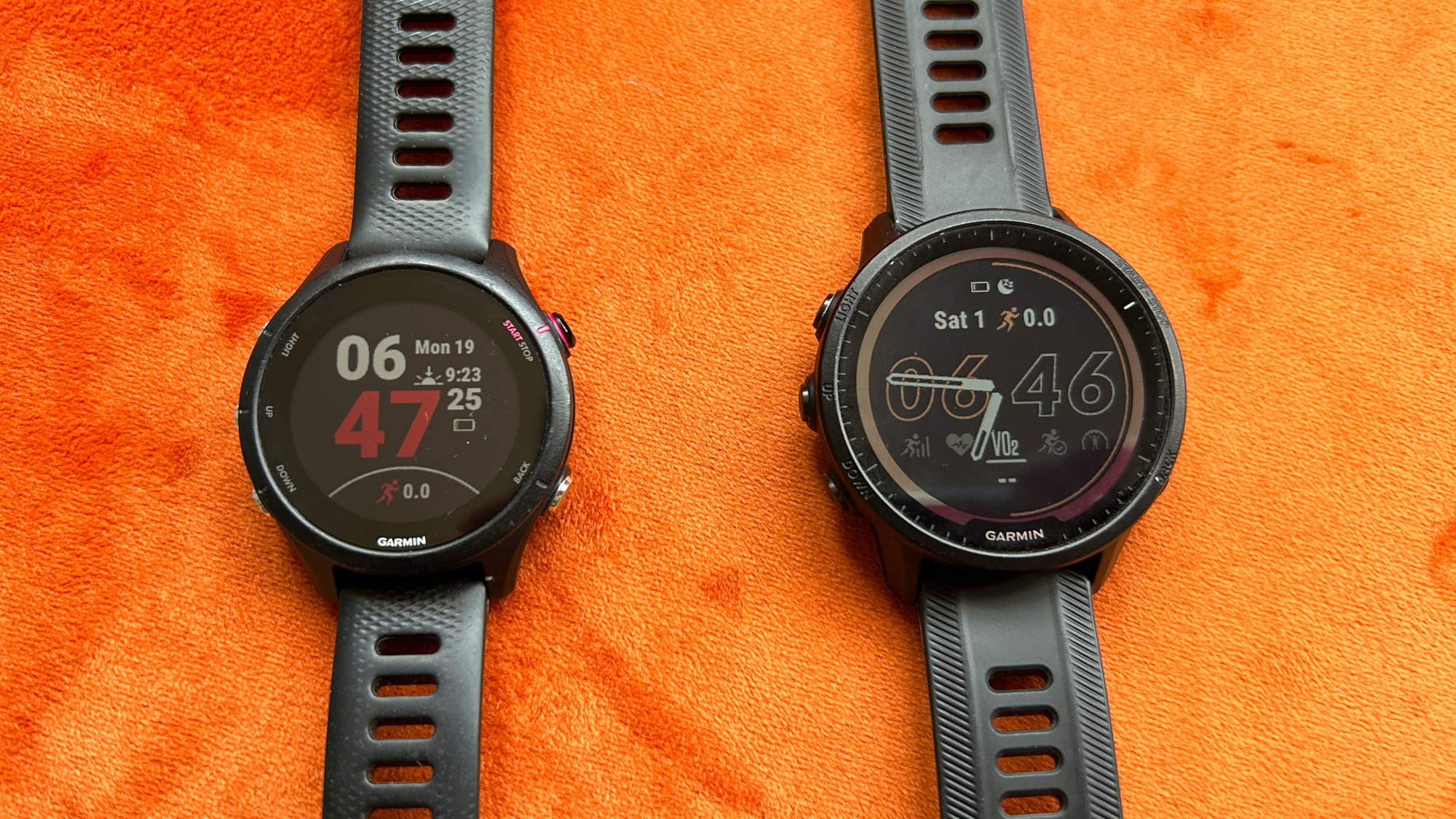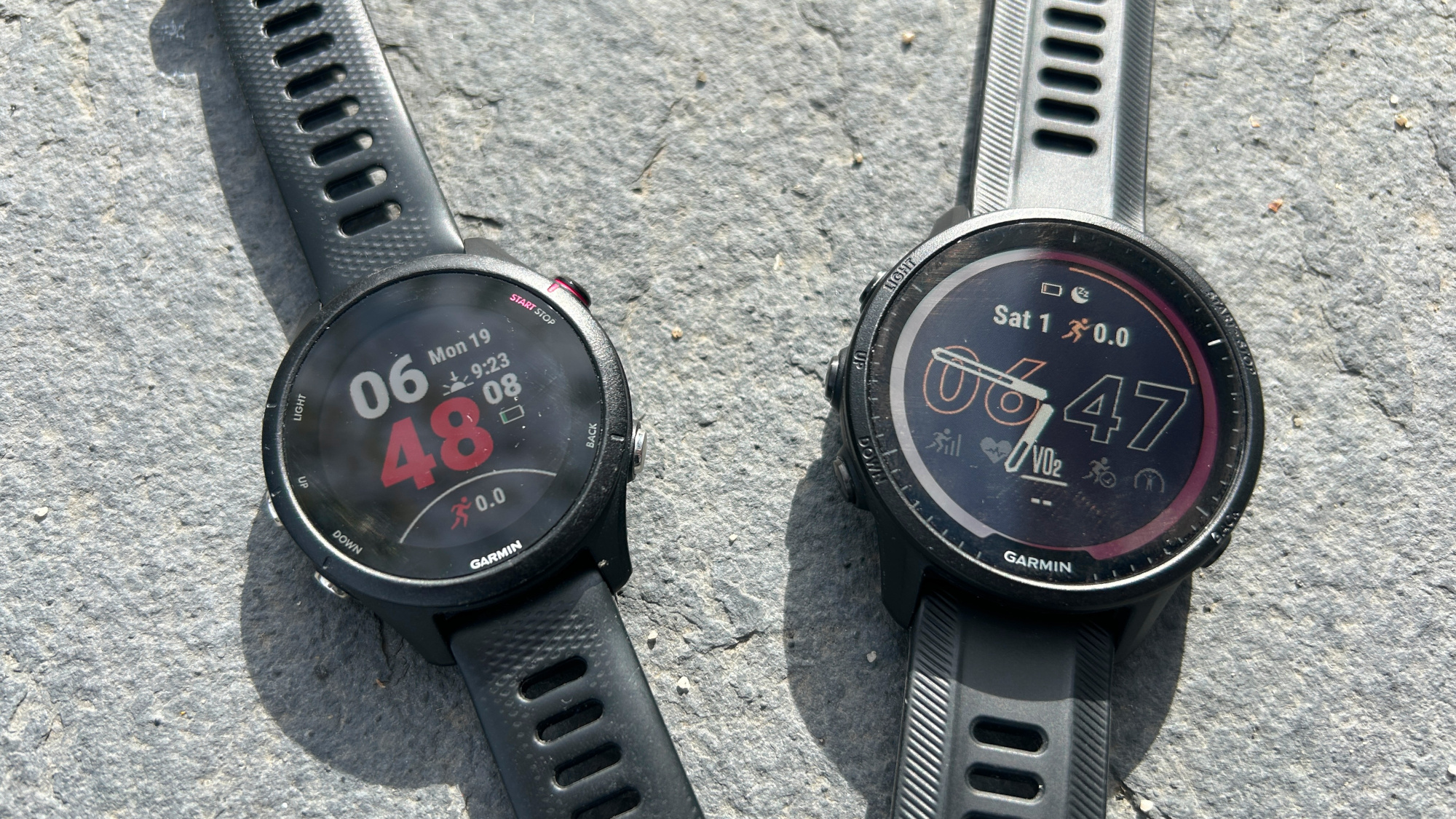Garmin Forerunner 955 Vs Garmin Forerunner 255
The Garmin Forerunner 255 and Forerunner 955 both offer great value compared with newer watches, but which should you get?

The Garmin Forerunner 955 may just be the best value watch on the market, since it packs in almost all the software features you get on Garmin’s top watches like the Fenix 7 Pro and Epix Pro, but costs less thanks to its lightweight plastic design.
For
- Training readiness
- Maps
- Solar option
Against
- Only one size
- Plastic design

The Forerunner 255 is the cheapest watch in Garmin’s range to offer multi-band GPS, and backs up its accurate tracking with useful extras like breadcrumb navigation and music storage. It also comes in two sizes, and, as a result, is a great option for those with slender wrists.
For
- Cheaper than Forerunner 955
- Two sizes available
- Multi-band GPS
Against
- No maps
- Shorter battery life than 955
- No training readiness
The Garmin Forerunner 955 and Garmin Forerunner 255 have been superseded in 2023, but the main update you get with the newer Forerunner 965 and 265 watches is an AMOLED screen, which isn’t something everyone wants on a sports watch.
That means the 255 and 955 remain among the best sports watches, and they’re also now the best-value options in Garmin’s range because they are old enough to appear in sales. If you’re picking between the two, you’re getting good value either way, and the choice largely depends on whether you want to pay the extra for the color maps on the 955, plus a couple of other useful training analysis features.
Garmin Forerunner 955 vs Garmin Forerunner 255: Price And Availability
Garmin launched the Forerunner 955 in April 2022 and while there is only one size, you can choose between non-solar and solar versions. The standard Forerunner 955 costs $499.99 in the US and £479.99 in the UK. It’s $599.99/£549.99 for the solar version.
The Garmin Forerunner 255 launched in June 2022 and it comes in two sizes, and there are music and non-music options. The music versions of the watch cost $399.99/£349.99 and the non-music watches are $349.99/£299.99.
The watches are frequently available for less than their RRP, especially in big sales periods like Black Friday. Price drops of $50-$80 are common for all models of both watches.
How I Tested These Watches
I tested the Garmin Forerunner 255 and Garmin Forerunner 955 for several weeks before writing my reviews for Coach, tracking all my workouts, everyday activity and sleep with the watches. I tested the smaller Forerunner 255S and Forerunner 955 Solar. My main sport is running and I usually log 50-70 miles a week, as well as tracking the one or two cycles, yoga sessions and strength workouts each week.
• Read my Garmin Forerunner 255 review
• Read my Garmin Forerunner 955 review
Design

The Forerunner 955 and 255 are plastic watches with Gorilla glass memory-in-pixel LCD screens and five buttons, with the only real upgrade on the 955 being that it has a touchscreen, as well as a solar option.
The Forerunner 955 is a larger watch than both versions of the 255, but the standard 255 has the same size screen at 1.3in, while the smaller 255S has a 1.1in screen. The Forerunner 255 is lighter than the 955: The standard 255 is 49g, the 255S is 39g and the 955 is 52g. Both watches have a 5ATM water-resistance rating.
Both watches offer multi-band GPS tracking, as well as less accurate, less power-intensive options like all-systems-on, and have the same array of sensors on board, including a barometric altimeter. They can connect to external devices via Bluetooth and ANT+, and have the same smart features: music storage (only on the music versions of the 255) and Garmin Pay.
Sports Tracking And Training Analysis
I found the watches’ GPS tracking impressively accurate, with Garmin’s multi-band mode the most reliable. The heart rate tracking was more hit-and-miss, and to get the best data feeding into the training analysis on the watches, I would use a chest strap heart rate monitor.
This is particularly important with the Forerunner 955, since it offers more extensive training analysis, including Garmin’s useful training readiness feature. This gives you a score out of 100 that rates how ready you are to train based on factors like recent training, sleep and heart rate variability readings.
The Forerunner 265 offers most of the data underlying this score, including tracking your heart rate variability each night, but doesn’t give the readiness score. It also misses out some other training analysis from the 955, such as heat and altitude acclimation.
You also get more sports modes on the Forerunner 955, and it is a full golf watch with more than 42,000 courses loaded on the watch to help you navigate your round.
Battery Life

The Garmin Forerunner 955 offers longer battery life than the smaller 255, as you would expect, but in practice the difference was not huge for me. During my testing, the Forerunner 255S lasted around six days on a charge, and the Forerunner 955 Solar lasted seven to eight days. I was running almost every day with the multi-band mode enabled on both watches, and had notifications coming in.
If you live in a sunny climate and are outdoors for several hours each day, the solar version of the 955 will extend your time between charges, but this wasn’t a notable upgrade for me when testing in the UK and only going outside for one or two hours each day. If you’d like more detail, I've written about my experience with Garmin’s solar charging.
| Header Cell - Column 0 | Garmin Forerunner 255S | Garmin Forerunner 255 | Garmin Forerunner 955 | Garmin Forerunner 955 Solar |
|---|---|---|---|---|
| Smartwatch mode | 12 days | 14 days | 15 days | Up to 20 days solar |
| GPS-only | 26 hours | 30 hours | 42 hours | Up to 49 hours solar |
| GPS-only with music | 6 hours | 7 hours | 10.5 hours | 10.5 hours |
| Multi-band GPS | 13 hours | 16 hours | 20 hours | 20 hours |
Navigation
The Garmin Forerunner 255 doesn’t offer maps, but does have breadcrumb navigation with turn-by-turn directions, so you can still follow routes on the watch easily enough. It also has a back-to-start feature that guides you back to where you began your activity with a pointer.
While breadcrumb navigation is usually good enough, the maps on the Forerunner 955 are one of the biggest reasons to consider upgrading. The color maps are clear and make navigation much easier, and they are routable, so you can create routes on the fly because the watch knows where you are, rather than just overlaying your route or position over a map.
With the Forerunner 955 you also get one of my favorite Garmin features. ClimbPro analyzes the elevation on your route and picks out the climbs and descents so you can see the details on them individually during your activities. This means you can gauge your effort on climbs more easily, since you know how much longer you’re going to be running uphill.
More Versus
See how the Garmin Forerunner 955 stacks up against other Garmin watches.
- Garmin Forerunner 955 vs Garmin Forerunner 965
- Garmin Forerunner 955 Vs Garmin Forerunner 945
- Garmin Forerunner 955 Vs Garmin Fenix 7
See how the Garmin Forerunner 255 compares with earlier and later generations.
Get the Coach Newsletter
Sign up for workout ideas, training advice, reviews of the latest gear and more.

Nick Harris-Fry is a journalist who has been covering health and fitness since 2015. Nick is an avid runner, covering 70-110km a week, which gives him ample opportunity to test a wide range of running shoes and running gear. He is also the chief tester for fitness trackers and running watches, treadmills and exercise bikes, and workout headphones.
Coros Vertix 2S Review: The Garmin Fenix Rival Gets Some Useful Upgrades
How To Pick The Best Garmin Watch For You
